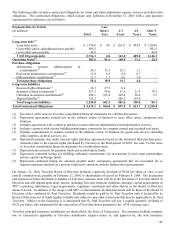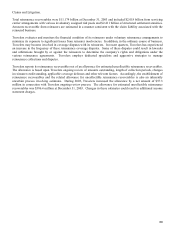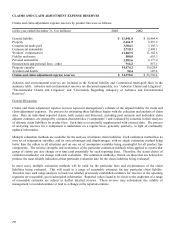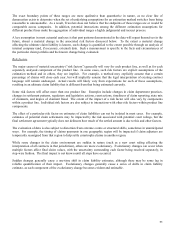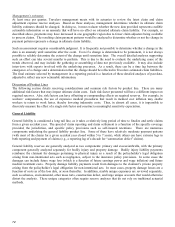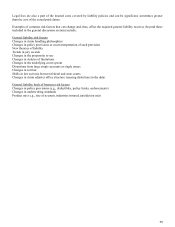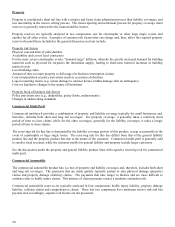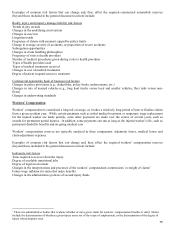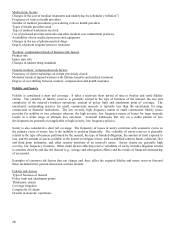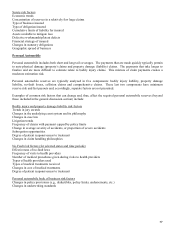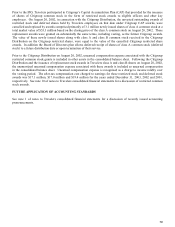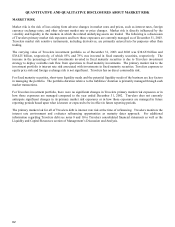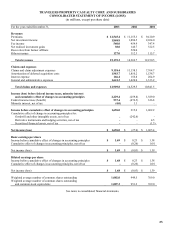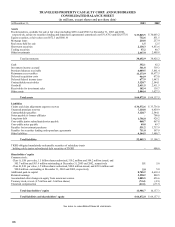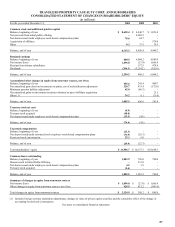Travelers 2003 Annual Report Download - page 79
Download and view the complete annual report
Please find page 79 of the 2003 Travelers annual report below. You can navigate through the pages in the report by either clicking on the pages listed below, or by using the keyword search tool below to find specific information within the annual report.
77
Surety risk factors
Economic trends
Concentration of reserves in a relatively few large claims
Type of business insured
Type of obligation insured
Cumulative limits of liability for insured
Assets available to mitigate loss
Defective workmanship/latent defects
Financial strategy of insured
Changes in statutory obligations
Geographic spread of business
Personal Automobile
Personal automobile includes both short and long tail coverages. The payments that are made quickly typically pertain
to auto physical damage (property) claims and property damage (liability) claims. The payments that take longer to
finalize and are more difficult to estimate relate to bodily injury claims. This mixture of claim payments creates a
moderate estimation risk.
Personal automobile reserves are typically analyzed in five components: bodily injury liability, property damage
liability, no-fault losses, collision claims and comprehensive claims. These last two components have minimum
reserve risk and fast payouts and, accordingly, separate factors are not presented.
Examples of common risk factors that can change and, thus, affect the required personal automobile reserves (beyond
those included in the general discussion section) include:
Bodily injury and property damage liability risk factors
Trends in jury awards
Changes in the underlying court system and its philosophy
Changes in case law
Litigation trends
Frequency of claims with payment capped by policy limits
Change in average severity of accidents, or proportion of severe accidents
Subrogation opportunities
Degree of patient responsiveness to treatment
Changes in claim handling philosophies
No-Fault risk factors (for selected states and time periods)
Effectiveness of no-fault laws
Frequency of visits to health providers
Number of medical procedures given during visits to health providers
Types of health providers used
Types of medical treatments received
Changes in cost of medical treatments
Degree of patient responsiveness to treatment
Personal automobile book of business risk factors
Changes in policy provisions (e.g., deductibles, policy limits, endorsements, etc.)
Changes in underwriting standards


